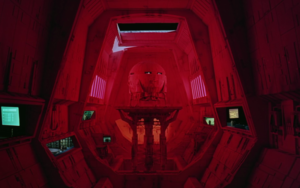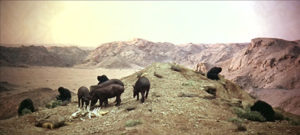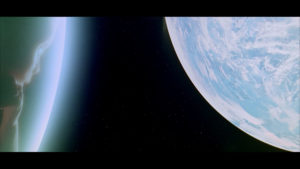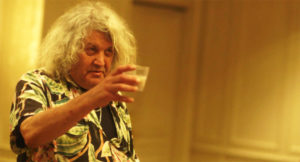 Before I refill my popcorn bowl for six hours-plus of Michael Cohen Live! tomorrow in DC, I have to hammer that “Green Book” Best Picture nail, like pretty much everyone else already has.
Before I refill my popcorn bowl for six hours-plus of Michael Cohen Live! tomorrow in DC, I have to hammer that “Green Book” Best Picture nail, like pretty much everyone else already has.
As a life-long movie fan, and as someone who (he says smugly) believes movies can be art, I assure you with near 100% certainty that 10 years from now “Green Book” will be yet another all-but-forgotten example of Hollywood sentimentality while “Roma” will still be regarded as one of the 50 finest movies of this era. This year, among the Best Picture nominees, based on the marriage of artistic expression and technical craft, on the breadth and depth of human fears, aspirations, motivations and desires — on how life is lived — there was “Roma” and then there was everything else.
Critics and fans who, like me blurted out “Are you [bleeping] kidding me!?” when Julia Roberts announced Best Picture, have had this experience before … many times. (And let’s not forget 1969 when “Oliver!” won and “2001” wasn’t even nominated. Or 1977, when “Rocky” beat out “Network.”) There’s a deep, sappy strain of treacly, middle-brow do-gooderism that has always run through Hollywood.
But I mean, let’s be real, the movie industry is a business based on selling the most tickets it possibly can. Cut the widest path into mass appeal. Art is fine, popular is much better. Hollywood’s self-satisfying liberal neurons get all fired up and excited at the thought of giving the world’s ticket buyers a big, glamorous demonstration of what it believes the world wants to see … in Hollywood’s values.
The rub of course is that the Oscars are handed out by The Motion Picture Academy of ARTS and SCIENCES, which kinda, sorta implies that its big awards show exists to salute and commend the best of the cinematic “art”, as well as the “sciences” that help convey artistic expression to the masses. It shouldn’t matter whether “the best” sold 100 million tickets or 100,000.
But it does.
Before the telecast there was lots of talk about the minefield of screw-ups this year’s glitzy pageant was blundering through. No host! Cratering ratings! How about an Oscar for Best Popular Movie? How about handing out a few of the dull awards during commercial breaks?
Speaking of minefields, in the era of “Oscars So White”, #MeToo and #TimesUp, the Academy’s clear and almost comical determination to inoculate itself against any new charges of racial or gender insensitivity likely contributed to “Green Book’s” disproportionate appeal. I mean, as I watched the parade of remarkably diverse presenters, I had to wonder if guys like Tom Hanks, Matt Damon and Tom Cruise had had their SAG cards pulled.
Distilled to its essence, all those controversies were rooted in the Prime Directive of the Academy Awards — namely: put on a TV show that gets bigly ratings. (As though either the Academy or ABC/Disney would be lining up at a food shelf if the Oscarcast audience slides below 40 million.) The niggling question of whether the nominated movies were truly the year’s most artistic or most technically creative wasn’t really on the radar.
But this is really deep same-old, same-old.
The Oscar telecast has always felt more like a mash-up of Broadway and dinner theater than an event unabashedly devoted to movies. It’s (another) celebrity fashion show, with an orchestra, lots of interruptions for singing and dancing, a couple of snarky jokes and, of course, if we’re lucky, moments of bona fide apex Hollywood. (Bradley Cooper and Lady Gaga. Now that’s what you call “puttin’ on a show”, folks.)
But the show itself — an event supposedly all about commending the best of the year in movie making — is forever incapable of devoting itself top filmmaking. It can’t even bring itself to describe to its massive international audience how movie art is made great, or even “artful”. This year’s show for example devoted easily 10 times as much of its hyper-super valuable airtime to Best Song nominees than examples of the year’s best editing or cinematography.
You tell me which is more core to the essential heart of movie-making.

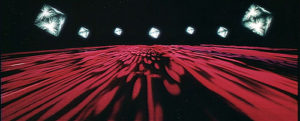
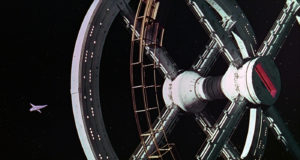 Tiny figures moving about the space station as the PanAm shuttle lines up for docking, and in the moon base Clavius as the bulbous Aries transporter is lowered, like a head on a platter, into the vast underground hangar are now clearly articulated.
Tiny figures moving about the space station as the PanAm shuttle lines up for docking, and in the moon base Clavius as the bulbous Aries transporter is lowered, like a head on a platter, into the vast underground hangar are now clearly articulated.